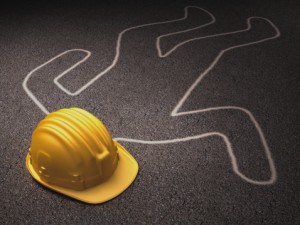 As a construction worker, you face many risks on a daily basis. But none of these is quite so prevalent as the risk of falling. OSHA reports in 2012, 269 construction workers fell to their death. Falls remain the leading cause of death on construction sites. It’s because these falls are completely preventable that OSHA safety officials and the attorneys at Ginarte are committed to raising awareness about their risks.
As a construction worker, you face many risks on a daily basis. But none of these is quite so prevalent as the risk of falling. OSHA reports in 2012, 269 construction workers fell to their death. Falls remain the leading cause of death on construction sites. It’s because these falls are completely preventable that OSHA safety officials and the attorneys at Ginarte are committed to raising awareness about their risks.
OSHA has a safety stand-down scheduled for the week of June 2, offering employers an opportunity to stop work on their sites and discuss the risks of falling with their workers. It’s a voluntary event, but with hundreds of workers dying every year on construction sites, holding a stand-down is a good idea
Safety stand-down information
A safety stand-down is a stop in the day-to-day work at a construction site for a focused meeting on safety issues. OSHA launched a fall prevention campaign in 2012 to try to reduce fall fatalities, and the planned stand-down is an extension of that campaign.
According to OSHA, falls can be prevented through proper planning, providing the right equipment, and good training. The safety stand-down allows employers and supervisors to focus on the training aspect of fall prevention and to revisit safety issues with their workers, who may not have been reminded of fall-prevention practices since they first started the job.
Fall hazards are frequently cited by OSHA inspectors.
Falls kill more workers than any other single type of construction accident and account for an overwhelming number of OSHA violations. While these violations may be a headache for workers and employers alike, they very well could prevent a serious accident.
Recently, an employer in nearby Garfield, N. J. was cited for putting workers at unnecessary risk of falling. According to the OSHA press release, East Coast Stucco & Construction, Inc., was cited for a second time for fall and scaffolding hazards. OSHA officials were called to inspect after receiving complaints that the employer wasn’t providing adequate fall protection for workers.
The company was cited with four repeat violations for not bracing scaffolds, not having complete work platforms, providing unsafe access to scaffolds, and a lack of fall protection. They were cited for similar violations in 2010. OSHA has proposed $58,520 in penalties for the fall and scaffolding hazards that put workers at risk.
A novel approach to fall protection
While the most common fall protection practices involve tethering off when working from heights, making sure scaffolds and ladders are in good condition, and training workers on proper prevention practices, a novel idea is being proposed at the industry safety website EHS Today.
According to EHS Today, newly designed jetpacks are being launched for use in New Zealand, first for military and first-responders. The devices could have a future in fall prevention.
The jetpacks come from Martin Aircraft Co. and are able to fly for over 30 minutes at speeds up to 60 mph, and heights reaching over 800 feet. According to the maker of the Martin Jetpack, safety was their primary concern and the device features a rollover bar, arm restraint, frontal protection, and even a parachute.
While it could be a while before we see construction workers repairing roofs in jetpacks, EHS Today says it could “revolutionize” fall prevention.
Until then, we have to depend on the tried and true methods of fall prevention—proper equipment and proper training. With fall accidents happening every day across this country, we can’t wait for technology to solve the problem.
